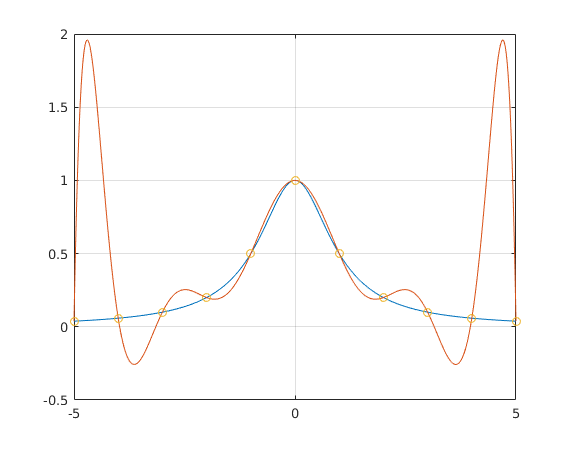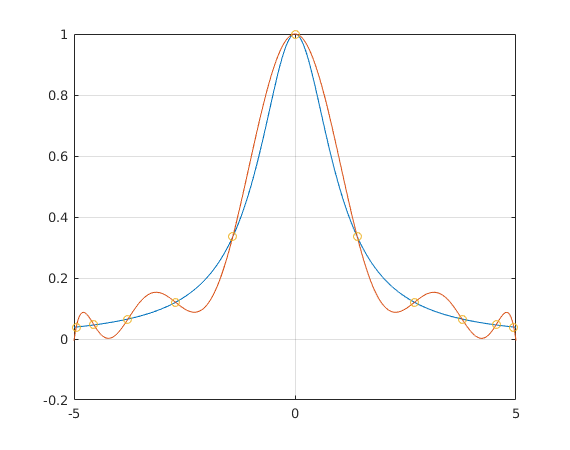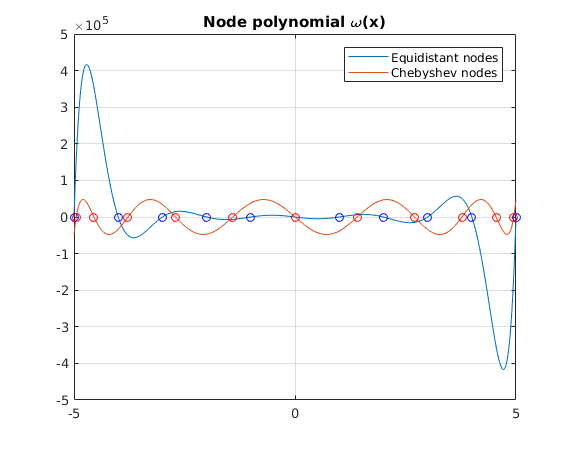Example for interpolation
Contents
Interpolation with equidistant nodes
We want to approximate the function f(x) = 1/(1+x^2) on the interval [-5,5]
f = @(x) 1./(1+x.^2); % define function f a = -5; b = 5; % endpoints of interval n = 11; % number of nodes for interpolation xt = linspace(-5,5,1000); % use these x values for plotting xe = a + (0:n-1)*(b-a)/(n-1); % equidistant nodes, same as xe = linspace(a,b,n) ye = f(xe); % find values of f at nodes xe d = divdiff(xe,ye); % use divided difference algorithm to find coefficients d pt = evnewt(d,xe,xt); % evaluate interpolating polynomial at points xt plot(xt,f(xt),xt,pt,xe,ye,'o'); grid on % plot function f and interpolating polynomial % mark given points with 'o'

Interpolation with Chebyshev nodes
xc = (a+b)/2 + (b-a)/2*cos(pi/n*((1:n)-.5)); % Chebyshev nodes yc = f(xc); % find values of f at nodes xc d = divdiff(xc,yc); % use divided difference algorithm to find coefficients d pt = evnewt(d,xc,xt); % evaluate interpolating polynomial at points xt plot(xt,f(xt),xt,pt,xc,yc,'o'); grid on % plot function f and interpolating polynomial % mark given points with 'o'

Compare node polynomials
We plot the node polynomial (x-x_1)...(x-x_n) for equidistant nodes and for Chebyshev nodes.
Note:
- The Chebyshev nodes have a wider spacing near the center, and are closer together near the endpoints of the interval [a,b]
- The node polynomial for equidistant nodes becomes huge near the endpoints
- The node polynomial for Chebyshev nodes has oscillations of uniform size
ye = ones(size(xt)); % equidistant nodes: evaluate (x-x_1)...(x-x_n) for xt values for j=1:n ye = ye.*(xt-xe(j)); end yc = ones(size(xt)); % Chebyshev nodes: evaluate (x-x_1)...(x-x_n) for xt values for j=1:n yc = yc.*(xt-xc(j)); end plot(xt,ye,xt,yc); hold on % plot node polynomials plot(xe,zeros(1,n),'bo',xc,zeros(1,n),'ro') ; hold off % mark nodes with 'o' grid on; title('Node polynomial \omega(x)') legend('Equidistant nodes','Chebyshev nodes')
